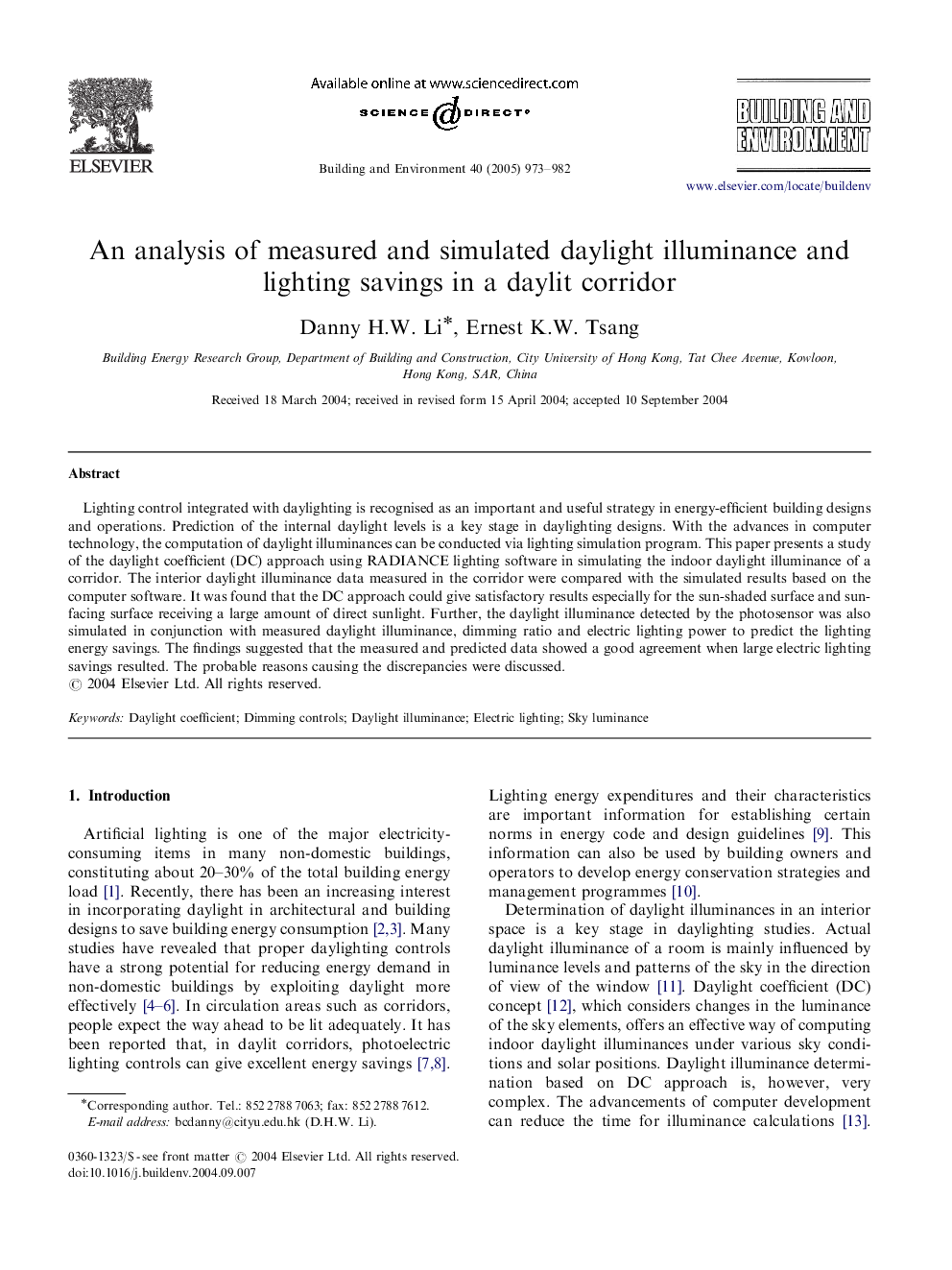| Article ID | Journal | Published Year | Pages | File Type |
|---|---|---|---|---|
| 10282887 | Building and Environment | 2005 | 10 Pages |
Abstract
Lighting control integrated with daylighting is recognised as an important and useful strategy in energy-efficient building designs and operations. Prediction of the internal daylight levels is a key stage in daylighting designs. With the advances in computer technology, the computation of daylight illuminances can be conducted via lighting simulation program. This paper presents a study of the daylight coefficient (DC) approach using RADIANCE lighting software in simulating the indoor daylight illuminance of a corridor. The interior daylight illuminance data measured in the corridor were compared with the simulated results based on the computer software. It was found that the DC approach could give satisfactory results especially for the sun-shaded surface and sun-facing surface receiving a large amount of direct sunlight. Further, the daylight illuminance detected by the photosensor was also simulated in conjunction with measured daylight illuminance, dimming ratio and electric lighting power to predict the lighting energy savings. The findings suggested that the measured and predicted data showed a good agreement when large electric lighting savings resulted. The probable reasons causing the discrepancies were discussed.
Related Topics
Physical Sciences and Engineering
Energy
Renewable Energy, Sustainability and the Environment
Authors
Danny H.W. Li, Ernest K.W. Tsang,
